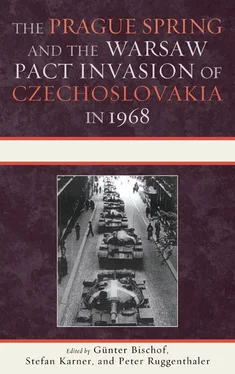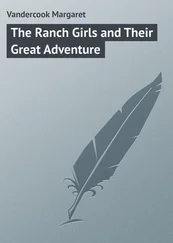38. An American journalist wrote in October 1968 that most signers of collective letters ( podpisanty ) were from Moscow. In terms of professions, the group’s composition was as follows: thirty-four civil engineers, twenty-four physicist-mathematicians, twenty-two philologists, twenty writers, seventeen mathematicians, seventeen teachers, fifteen scientific researchers, thirteen undergraduate students, ten literary critics, ten historians, nine editors, nine graduate students, eight physicists, eight philosophers, seven economists, seven translators, seven linguists, and six art critics, among others. The only sizable group outside the capital included the scientists from the Novosibirsk Akademgorodok. Paul A. Smith Jr., “Protest in Moscow,” Foreign Affairs (October 1968).
39. Vladimir Shlapentokh, Soviet Intellectuals , 174.
40. B. A. Grushin, Chetyre Zhizni Rossii v zerkale oprosov obshchestvennogo mneniya. Epokha Brezhneva (1) (Moscow: Progress-Traditsiia, 2003), 29–30.
41. John Scott’s speech for the NYU Radio Liberty Conference, “On Communication with Soviet Youth, 10 March 1967,” The Open Society Archive, Budapest, 300/80, Box 496.
42. Grushin, Chetyre zhizni Rossii v zerkale oprosov obshchestvennogo mneniya , 101–15; KGB to the CC CPSU, 5 November 1968, Istoricheskii arkhiv 1 (1994): 175–207.
43. Jeremi Suri, “The Promise and Failure of ‘Developed Socialism,’” Contemporary European History 15, no. 2 (2006).
44. Victor Zaslavsky, The Neo-Stalinist State (Armonk, NY: M. E. Sharpe, 1982), 48–51.
45. More details in English, Russia and the Idea of the West , 70–72. 46. Aleksandr Bovin, XX vek kak zhizn’. Vospominaniya (Moscow: Zakharov, 2003), 180–84; Nikolai Shmelev, “Curriculum vitae,” Znamya-plus (1997–1998): 112. 47. Shmelev, “Curriculum vitae,” 112.
48. Bovin, XX vek kak zhizn’ , 189.
49. Mikhail Agursky, Pepel Klaasa (Jerusalem: URA, 1988), 328.
50. Vladimir Lukin, “Tanki na zakate leta,” Literaturnaya Gazeta , 18 August 1993; English, Russia and the Idea of the West , 110–11.
51. Arkady Vaksberg, Moya zhizn’ v zhizni , vol. 1 (Moscow: Terra Sport, 2000), 342, 391, 397.
52. Maya Turovskaya to the author, 25 June 2000, Moscow; also Tony Judt, Postwar , 421.
53. Andrei Sakharov, Progress, Peaceful Coexistence, and Intellectual Freedom (New York: Norton, 1968).
54. Yevtushenko, Volchii passport , 299–301.
55. Weiner, “Déjà Vue All Over Again,” 181; Augursky, Pepel Klaasa , 329; A. Alexandrov to the CC CPSU, 3 July 1969, in V. I. Fomin, Kino i Vlast’. Sovetskoe kino—1965–1985 godi. Dokumenti. Svidetel’stva. Razmyshleniya (Moscow: Materik, 1996), 337–42.
56. Recollections of Natalia Gorbanevskaya, “Chto pomniu ia o demonstratsii,” Prava Cheloveka v Rossii , http://www.hro.org/editions/karta/nr21/demonstr.htm(accessed 13 July 2008).
57. Mikhail Gorbachev, Zhizn’ i reformy , vol. 1 (Moscow: Novosti, 1995), 117–19, 157–59.
58. See English, Russia and the Idea of the West , 111.
59. Yevtushenko, Volchii passport , 299–301.
60. Igor Dedkov, “Kak trudno dayutsia inye dni!—Iz dnevnikovikh zapisey1953–1974 godov,” Novyi Mir 5 (1996): 144; Information from Vladimir Pechatnov, MGIMO student in 1968, 11 November 2006; Weiner, “Déjà Vu All Over Again,” 190.
61. Gorbachev, Zhizn’ i reformy , 1:119.
62. Gorbachev, Zhizn’ i reformy , 1:157–59.
63. G. S. Batygin, ed., Rossiiskaya sotsiologiya shestidesiatykh godov v vospominaniyakh i dokumentakh (St. Petersburg: Russkii khristianskii gumanitarnii institut, 1999), 398; Smeliansky, The Russian Theater after Stalin , 29–30.
64. Dmitry Furman, “Perestroika glazami moskovskogo gumanitariya,” in Proriv k svobode. O perestroyke dvadtsat’ let spustia (kriticheskiy analiz) , ed. Boris Kuvaldin (Moscow: Alpina Biznes Buks, 2005), 316–19.
5
Politburo Decision-Making on the Czechoslovak Crisis in 1968
Mikhail Prozumenshchikov
You will understand that we had no choice.
The forty years that separate us from the Czechoslovak crisis in 1968 is, historically speaking, a relatively short time span for historians to arrive at a balanced analysis of those events and to publish both the key facts and the relevant details that are needed for a comprehensive historical reconstruction of the “Prague Spring.” This kind of reconstruction has, in part, been made possible by archives in the countries of the former Socialist system becoming accessible and above all by the possibility of doing research on documents of the supreme organ, the Communist Party of the Soviet Union (CPSU), which ceased to exist in 1991. 1Archival material that has become available for the first time only during the last few years has been the basis for studying the most diverse aspects of the Prague Spring, notably the political processes that were played out among the top ranks of the Soviet leadership and that ultimately resulted in the military invasion of the independent “fraternal state.”
What is of supreme interest in the present context, in addition to drafts of resolutions and other documents that served as the basis for forthcoming announcements, are resolutions of the Politburo of the Central Committee (CC) of the CPSU, the de facto, though not the de jure, highest organ in the system of the Soviet party and the Soviet state. An analysis of these documents enhances our understanding of how the mixing of political ingredients was actually performed and of what mechanisms were at work in decision making with regard to the Czechoslovak crisis. Obviously, quite a few of the decisions that were to prove final were made on the spur of the moment during actual Politburo meetings. However, as a rule these meetings served for the rubberstamping of documents that had been elaborated in advance and had already met with all-round approval. It was an exception for these documents to be returned to the sender for further elaboration, and it was even more unusual for them to be rejected altogether. In cases where discussions flared up in the Politburo and issues were hotly contested—the atmosphere in the meetings encouraged speeches which were often emotional rather than coolly rational in character—participants’ role in the meeting was to demonstrate agreement with the leading figures of the party hierarchy. The final editing of the documents then took place in calmer waters, and the politician in charge of putting the final touches to the draft had the opportunity and, above all, the leisure to weigh carefully all the pros and cons and to come up with a result that was as finely honed for the purpose as possible. The many instances in which Soviet leaders returned to drafts of documents again and again to introduce major changes to texts that had already been edited by their own hand before are all cases in point.
The materials of the Politburo of the CC CPSU from the months before the invasion can be grouped as belonging to four different stages, by means of which it is possible to trace the change of heart on the part of the Soviet leadership with regard to the “Czechoslovak problem.”
THE PERCEPTION OF THE PRAGUE SPRING BY THE POLITBURO OF THE CC CPSU
In what may be considered the first stage, January and February 1968, relative calm was observed in Moscow vis-à-vis developments in the Czechoslovak Socialist Republic (ČSSR). Activities were limited to noting that the situation in the country was difficult and contradictory and to attempting to “give support” to the Czechoslovak leadership, be it in political, economic, or military/technical terms. 2
Читать дальше












